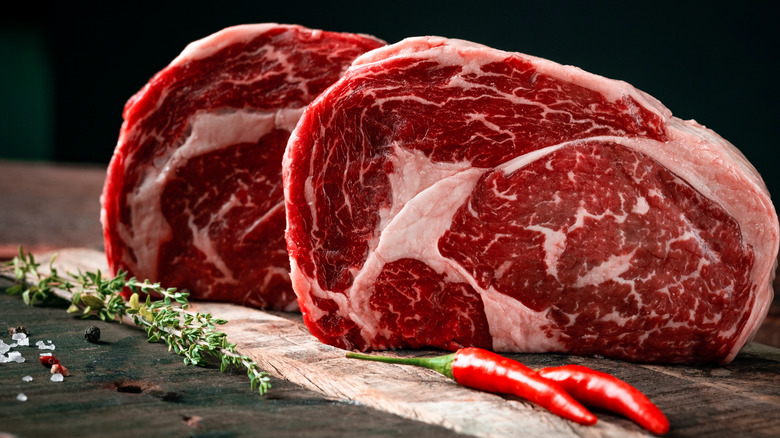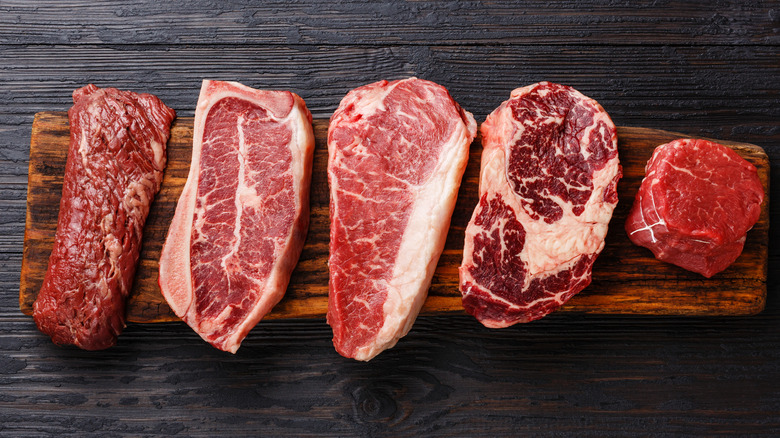Why The Fat On Your Steak Is So Important
Few things rival the mouth-watering experience of a buttery steak. Choose wisely, and each juicy bite will melt on your tongue and coat your palate with umami goodness. On the other hand, opt for a super lean cut of meat, or one without fat or marbling, and the culinary game may change entirely. Instead of moist steak that boasts a balance of savory and sweet, you might get a chewy slab of flavorless beef that's more reminiscent of leather.
The Telegraph explains that, when it comes to beef, fat can be found in three places. The first is subcutaneous (found just under the skin of the cow), and it's the fat layer you see along one side of steaks like T-bone. The second is intermuscular fat (found in between muscles), which is also easy to see (and discard) and found in tougher cuts like stewing beef. The third type of fat is intramuscular fat (found within muscles), and it looks like thin white streaks running throughout the steak. Known as marbling, intramuscular fat varies from one cut to another — leaner steaks like sirloin have less marbling than fattier cuts like ribeye. When it comes to cooking, it's the marbling that can predict how moist, flavorful, and downright succulent your steak will be.
Choose fattier steaks for taste, texture, and nutrition
MasterClass states that when marbled steak cooks, the fat melts into the meat and keeps it tender and juicy while adding great flavor throughout. Plus, the juices remain in the steak rather than ending up in the bottom of the pan, where they may evaporate before you have a chance to enjoy one drop. And there's a nutritional benefit, too; intramuscular fat is higher in oleic acid, a healthy unsaturated fat that may reduce the risk of heart disease.
Agrilife Today explains why more marbling leads to healthier meat: When the fat level in beef escalates due to increased marbling, the ratio of good fat to bad shifts. As the level of oleic and other healthy monounsaturated fats rises, the amount of unhealthy saturated fat and trans fatty acids decreases.
If you've ever wondered what makes Wagyu and Hanwoo beef so tender and flavorful, it's the high level of marbling. Korean Journal for Food Science of Animal Resources (posted by The National Institutes of Health) reports that the marbling in Wagyu (from Japan) and Hanwoo (from Korea) has increased over the years in an effort to appeal to consumer demand. The greater the marbling, the greater the taste and tenderness. Plus, studies show that highly marbled beef does not increase LDL (bad) cholesterol and may reduce your risk of cardiovascular disease.
The bottom line? More marbling equals more flavor, tender meat, and better nutrition.

